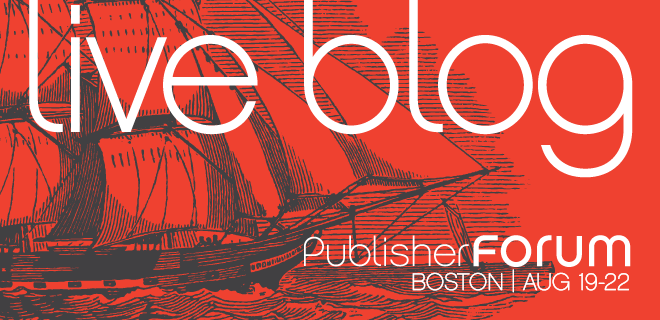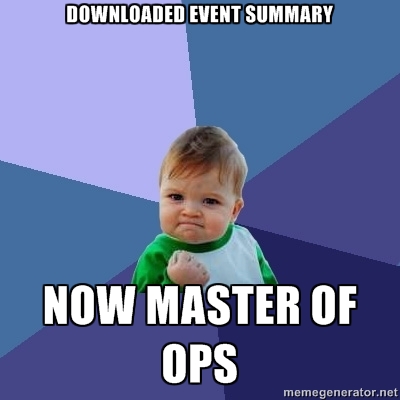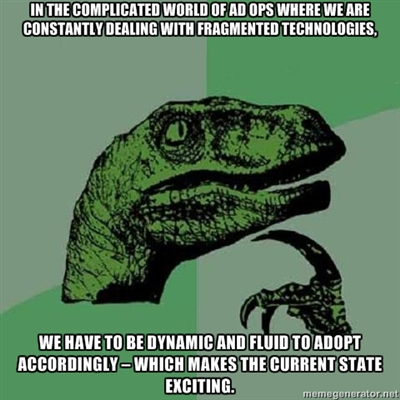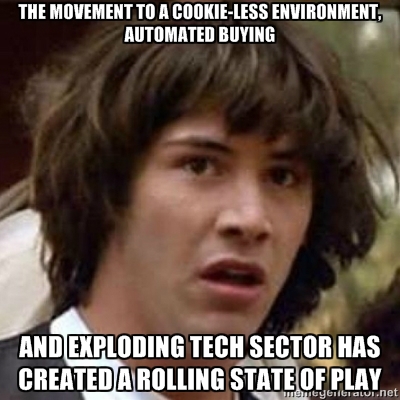
It’s a gorgeous day on Boston’s waterfront, and I’m going to have trouble keeping my eyes off the boats gliding across the harbor. After a night of cupcakes and cocktails at the World Trade Center, our attendees are trickling through the door, eager for Adam Cahill, EVP and Co-Media Director at Hill Holiday, to kick off the Publisher Forum with his keynote presentation on the future of the agency-publisher relationship. Keep track of the event by following our twitter @AdMonsters and the #PubForum hashtag.
9:04 Rob Beeler: Welcome to AdMonsters Publisher Forum. Who’s new? [A LOT of the audience throw up their hands.]
9:05 Bowen Dwelle: Great to see new people and veterans at the Publisher Forum. We believe in three things: 1) Focus, 2) Quality. and 3) Community.
9:10 Bowen Dwelle: “Adrian, what’s a word you would use to describe what you do?” Adrian D’Souza, “Actually, I have three: Getting. Shit. Done.” Other words thrown out include: structure, collaboration, change, agility.
9:11 Bowen Dwelle: “Agility. Yes. Getting shit done while you’re dancing.”
9:17 Rob Beeler and Gavin Dunaway share their love of internet memes.
9:20 Adam Cahill, EVP and Co-Media Director at Hill Holiday, takes the stage.
9:23 Bruce Springsteen played a key role in bringing together agencies and publishers at Fenway last week. It’s been a shallow relationship the past few years. “They just took us to Nieman’s and told us to shop for a while.”
9:26 This has been fine when we were selling the potential of the space, but now the relationship needs to evolve. This new era calls for a more serious relationship. We’re beyond the era of promise; we need to prove that what we have works. We can’t do this with the old frivolous relationship.
9:28 Huge enthusiasm around digital marketing, but not so much lately about display.
9:30 Product and partnership are two key ways we can bridge the entusiasm gap.
9:33 Math + Magic. We need to embrace programmatic buying, and we need new things, custom things – things that become a part of culture (beyond the banner).
9:36 We need to think beyond the margins. The solution probably doesn’t lie in simply developing a bigger version of what we have.
9:45 Three reasons to look for your own native formats: 1) They seem to work great; 2) They give you something to sell that no one else can because the format is based on your own audience’s behavior; 3) Creatives want to become a part of culture, and native formats do that.
9:57 Six things you can do: 1) Embrace programmatic buying. 2) Create new ad formats that are custom, embedded, native…anything but adjacent. 3) Be open to partnerships in the spirit of co-development and custom problem solving. 4) Bring product and ops people to meetings to change conversation. 5) Partner together to create new solutions that benefit the whole industry. 6) Challenge yourselves to reverse the enthusiasm gap.
An afternoon of productive, lively discussions and deep dives into the heart of ad ops challenges and opportunities has led us to our afternoon presentation by Chris Mejia, who works in the IAB‘s Ad Technology Group.
4:29: Chris predicts that by the end of 2013, over 50% of web users will be broadcasting the “do-not-track” signal.
4:41: DNT is not a content blocker nor does it mechanically impede cookies or ad targeting. It’s only an HTTP header flag. You must choose to honor it. On its own, it does not alter content, prevent setting of cookies, or prevent collection/use of data.
4:45: First party vs. third party. A first party designation indicates meaningful interaction with the user. Third parties are everyone else, unless acting as a service provider for a first party.
4:50: DNT is a 100% voluntary specification. No legal or regulatory obligation to honor DNT today in the US. If you do decide to honor it, it is enforceable by the FTC. Once you publically declare to honor DNT, it’ll probably be hard to reverse it.
4:52: You can choose to simply ignore DNT headers.
4:53: So why choose to honor DNT? The cat’s already out of the bag.
4:55: Microsoft IE10 – by default. Firefox – must turn it on. Safari & Opera likely to adopt.



After a delicious dinner and some (alleged) off-site shenanigans, our slightly-disheveled audience has regrouped this morning for coffee and Adrian D’Souza, Director of Display Operations at YouTube. Meanwhile, having been told by Beeler to ‘go to bed,’ at 10pm, I’m chipper and eager to lead a kayaking session this afternoon!! Haha.
9:05: Rob Beeler: Welcome to Boston. You guys are wicked smaht, and you’re the janitors of advertising. Kind of like Good Will Hunting.
9:15: Adrian D’Souza begins to explain the structure of Ad Ops at YouTube. They have a partner operations team, a technical producer team, a specialist mobile team, and a shared services department.
9:28: Philosophy has been to hire a few specialists with deep domain experise and a lot of smart generalists. Google has gLearn, an internal continuing education program that has been a great resource for employees.
9:37: Audacious goals have been at the crux of Google/YouTube’s success.
In true New England spirit, we celebrated the Publisher Forum with a clam bake on the lovely and secluded Spectacle Island, where Monsters feasted on clams, steak, and lobsters, walked near the still waters of the harbor, and reveled in an epic, fifty-person game of…flip cup. Now that we’ve brought frat life back, it’s time to bring this conference to a close.
9:05: Rob Beeler kicked off the morning with some AdMonsters business. Keep in mind our Mobile Publisher Forum to be held this November in San Antonio, and our upcoming OPS NYC event on October 4th, which will really bring together the best and brightest digital strategists out there.
9:30: Vikram Somaya, VP of Global Operations and Audience at Thomson Reuters, opened up his keynote “Leadership in the Time of the Yield Era,” with a brilliant Shakespearian rendition of the Seven Ages of the User: the single bounce; the winding repeat; the fan boy “sighing like a furnace”; the commentator, seeking a troll reputation; the moderator, the lean, slippered clicker; and the return to childhood, in which man taps on his ipad, smartphone, keyboard – everything. [Scene.]
9:37: Hire the smart people; fire the people who suck.
9:45: Peer Management: share knowledge; learn (platforms, ecosystems, best practices); understand the mind of a salesperson/media buyer; and plan in manageable chunks.
9:54: Make sure that your value is explained; be explicit.
10:00: Work for the job you want. When you are the one driving business, you have the power.
10:01: Partner with sales as equals. Incorporate planning with product and tech. Get close to finance.
10:06: Drive ownership and innovation. This involves understanding across teams and focusing on goals and strategies. Break down silos. Focus on talent.
10:11: Drive Victory. Be the Force. Stop the Buck. Create Revenue Lines. Own the Business.